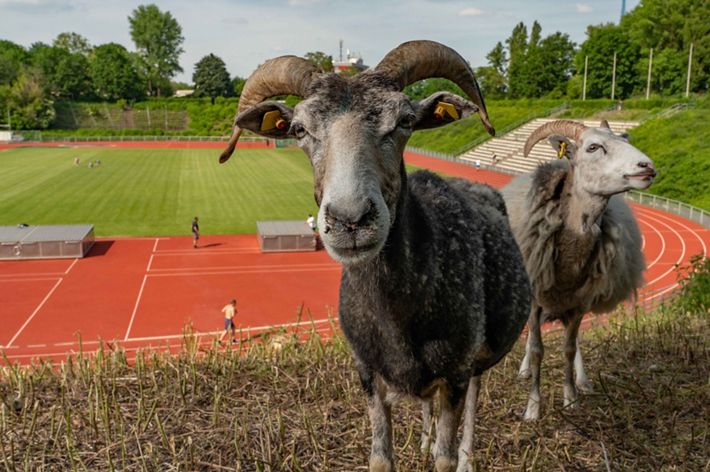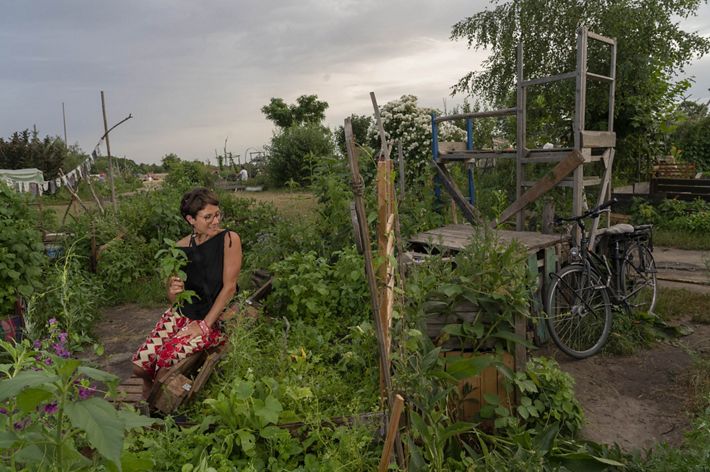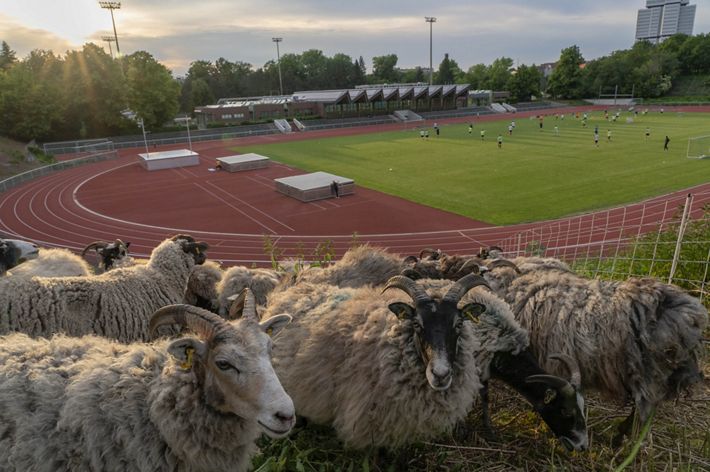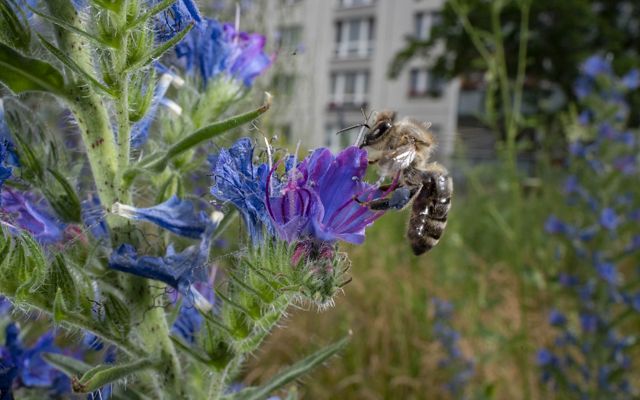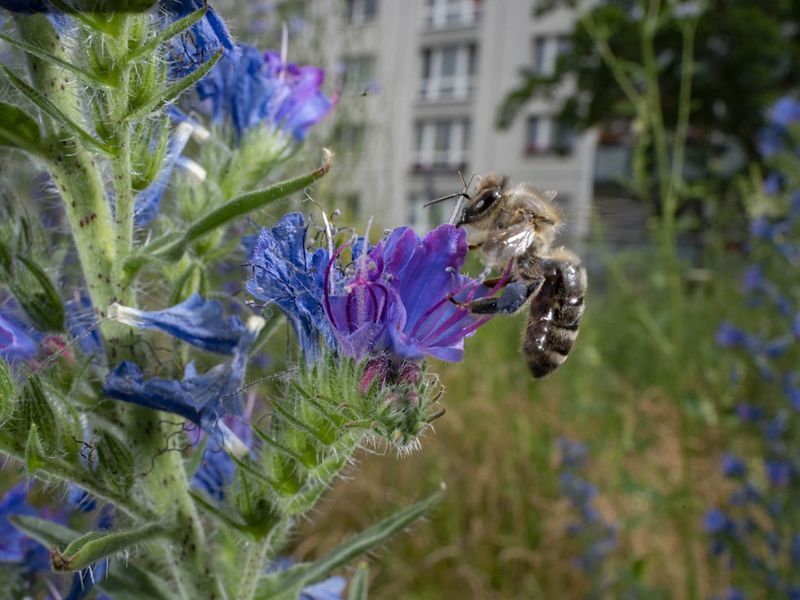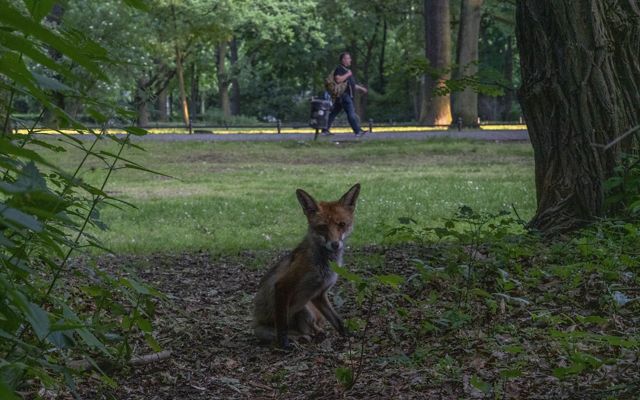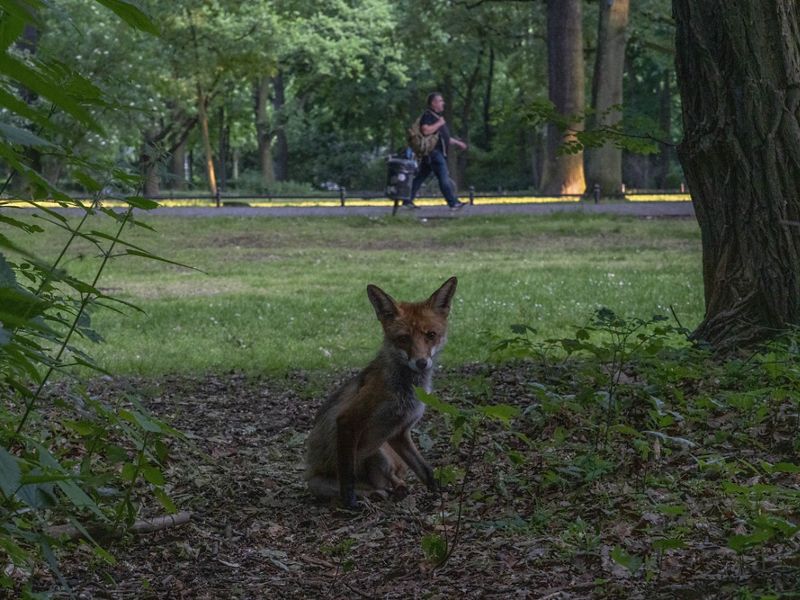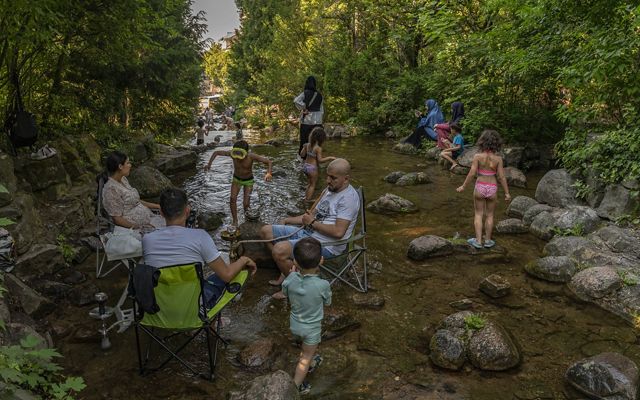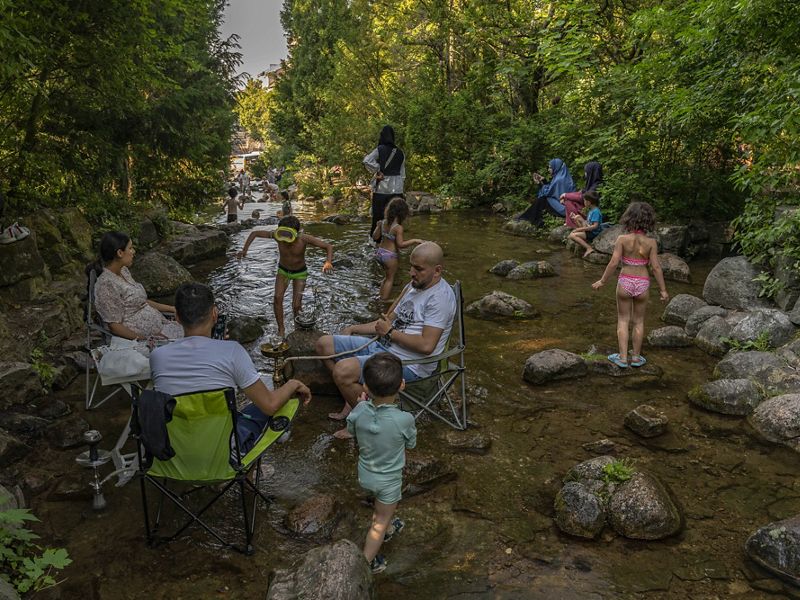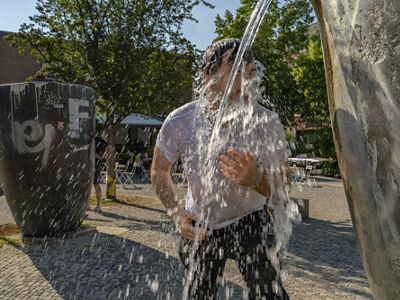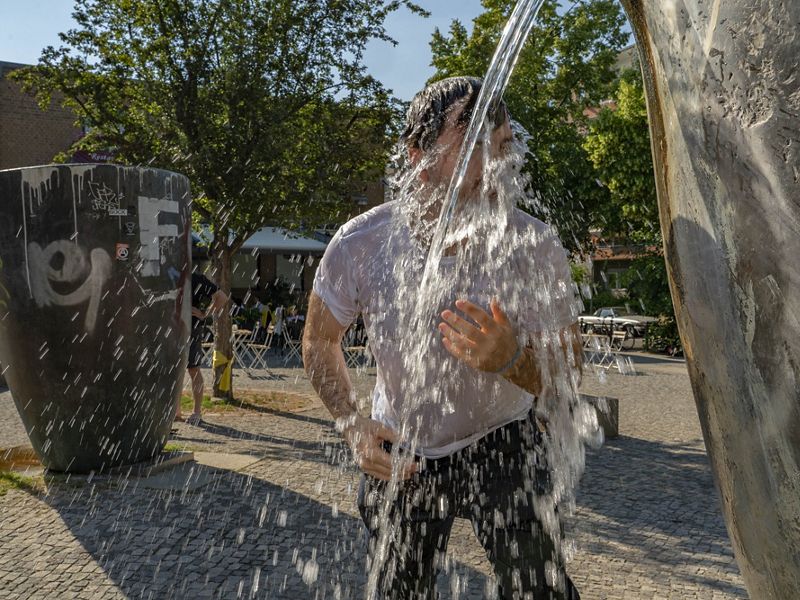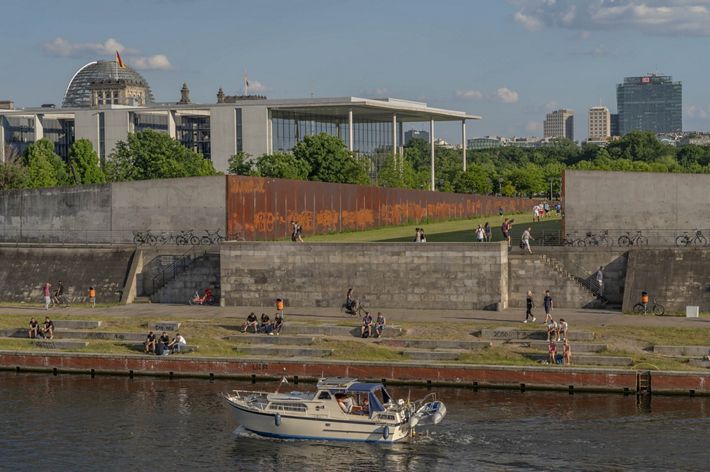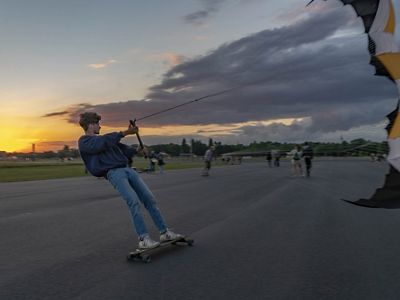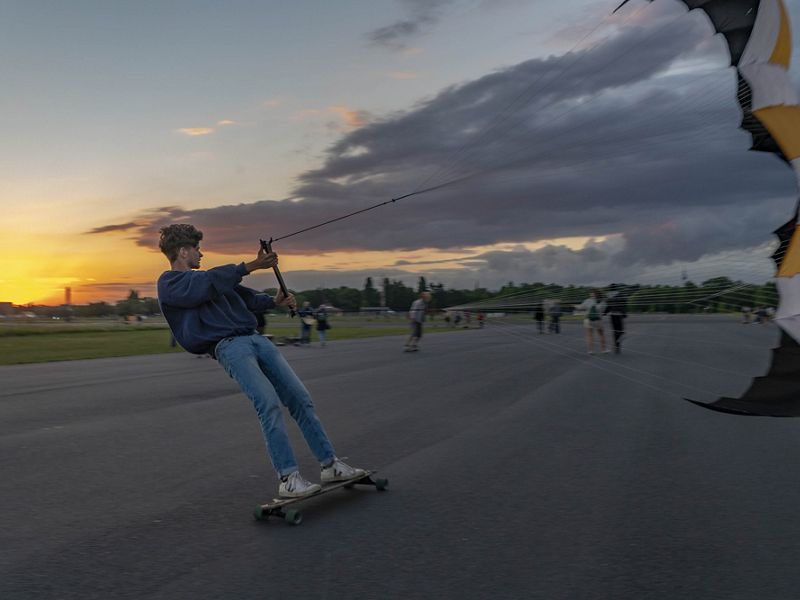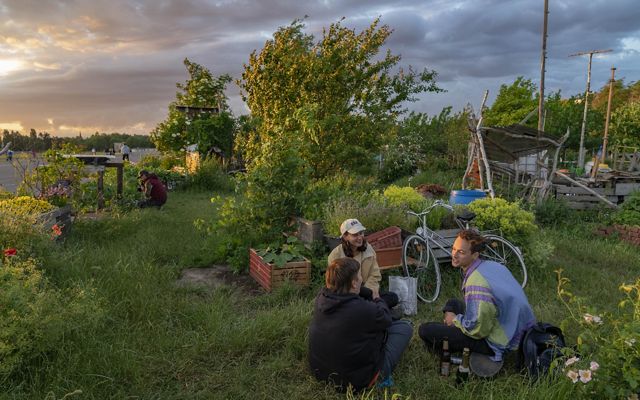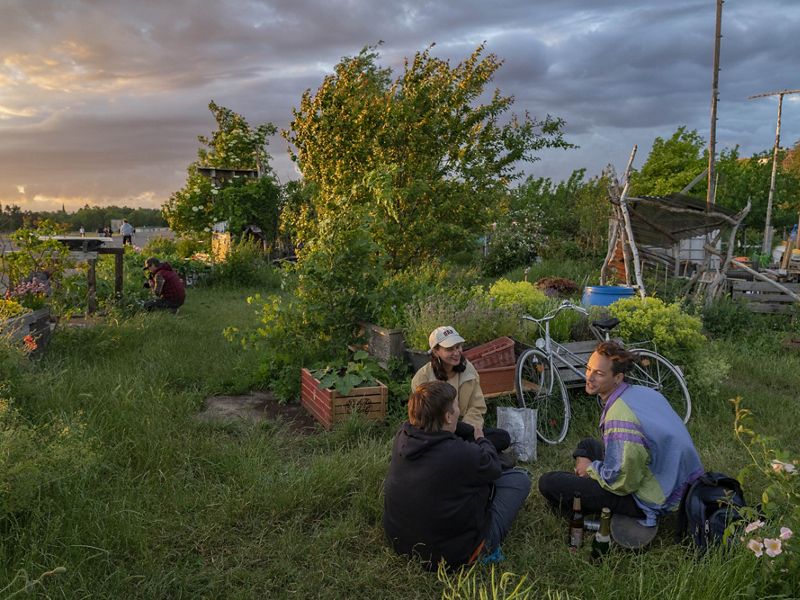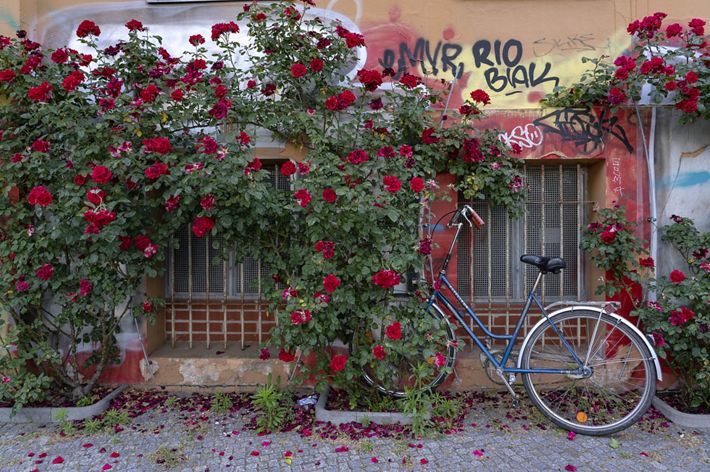Berlin’s Urban Evolution
Germany’s largest city has reinvented itself many times in its 785-year history. Now, it must do so once again in the face of climate change.
Summer 2022 Issue
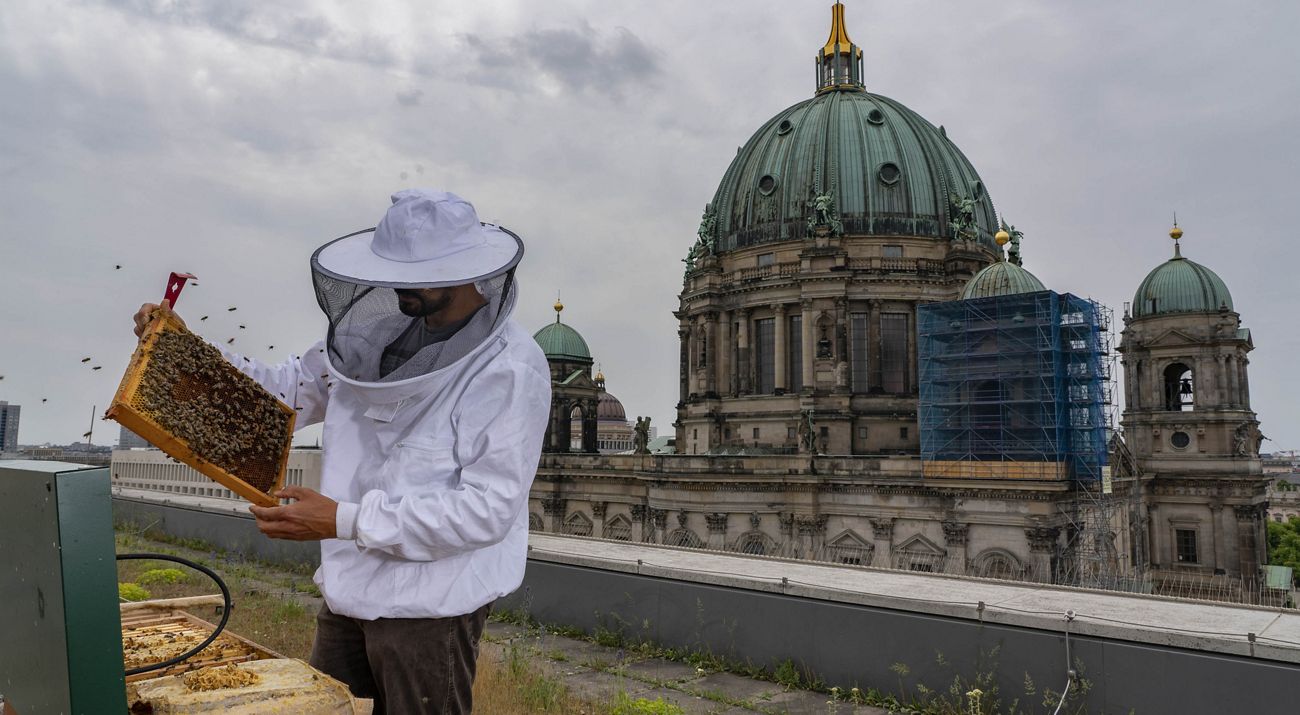
For three weeks last summer, Berliners coming to exercise at Wilmersdorf Stadium were greeted by a strangely bucolic scene. Sheep were grazing where the former grandstands had once stood, feeding where soccer fans had once cheered—their gentle bleating a surprising and pastoral note in the busy urban soundscape.
The animals were part of a pilot project initiated by the Charlottenburg-Wilmersdorf district’s Department of Nature Conservation and The Nature Conservancy’s Urban Greening Program, which launched in Germany in 2020 with a roughly $4 million gift from Amazon.
Wilmersdorf Stadium offered a chance to enhance urban biodiversity while also testing an inexpensive and low-carbon form of landscape maintenance. That maintenance had become necessary after the stadium, built as a community athletic facility in the mid 20th century to host 50,000 spectators—a capacity it never reached—removed its grandstands in the 1990s. Over time the newly exposed ground on the stadium’s embankments became overgrown with invasive box elder and other difficult-to-control species. In response, local conservation officials suggested the parks authority try sheep. The animals would both manage the invasives and leave a more diversified landscape in their wake, helping the hillside eventually evolve into an urban grassland and provide habitat for native insects and other wildlife.
For the district, it is a novel approach to repurposing an urban space. But looking to the restorative power of nature is an idea with deep roots in Berlin. Today, green space makes up nearly a third of the German capital. The city’s rooftops buzz with urban beehives, and bicycling accounts for more than 13% of all traffic, twice the share of U.S. cycling hotspot Portland, Oregon. As climate change brings new challenges, Berlin is looking to its history as a laboratory for understanding urban nature to chart a path forward.
Since Germany reunified in 1990, Berliners have often made parks and green spaces from the city’s former ruins. Part of the once-militarized, now-fallow border strip of the former Berlin Wall has been designated as a landscape conservation area and is being transformed into a 9-mile-long chain of parks, meadows and urban woodlands. Meanwhile, the runways and fields of Berlin’s century-old Tempelhof Airport, which closed in 2008, have been reborn as a 740-acre public gathering space—areas of which are also grazed by sheep.
The instinct to allow nature to reclaim disused spaces in the city stems in part from Berlin’s history as a pioneer in establishing the value of biodiversity in cities. “Berlin is called the cradle of urban ecology,” says Ulrich Heink, the head of the Charlottenburg Wilmersdorf Department of Nature Conservation.
In the 1970s, an ecologist named Herbert Sukopp began studying the vegetation that had sprung up in the “Brachen,” or fallow spaces, of Berlin’s urban fabric. Over time, Sukopp succeeded in demonstrating that cities, far from being denuded wastelands, are rich in species and often develop novel ecosystems distinct from those outside the city limits. “He introduced the idea of urban ecology worldwide,” Heink says.
In the coming century, cities like Berlin will only become more important as refuges for vulnerable species. Some species have already carved out ecological niches for themselves. Peregrine falcons, for instance, exhibit higher rates of reproductive success in urban areas than in rural ones. According to an international team of researchers, cities can even foster larger and more diverse bee populations than the surrounding countryside.
All of this makes reclaimed natural spaces like those being cultivated at Wilmersdorf Stadium important green pockets throughout the city. “Urban sites have huge potential for nature conservation,” Heink says.
The stadium project is one of several investments being made through TNC’s Urban Greening Program. According to Jamie Chan, who is leading the program, TNC is also working with local officials in Berlin, Stuttgart and a third, yet-to-be-announced municipality in Germany to identify opportunities for green infrastructure and other nature-based solutions that can help mitigate severe effects of climate change.
In Berlin, that means addressing urban flooding, extreme heat, and access to green space, says Rob McDonald, the lead scientist for nature-based solutions at TNC. Scientists predict that a warmer climate will produce more frequent and severe storms, as Europe saw in 2021, when catastrophic flooding tore through several countries, including Belgium and Germany, killing more than 200 people. Of equal concern, McDonald says, are deadly heat waves—already the most fatal of all weather events.
Northern European cities ill-adapted to hot climates will be hit especially hard, says McDonald. “Nobody has air-conditioning, you’re in big stone buildings often, and when you get heat events that last multiple days, they become like ovens.”
Warmer temperatures will affect more than the city’s human inhabitants. In the summer, Berlin can be as much as 9 degrees warmer than areas outside the city, creating an environment in which non-native species from hotter climates can thrive. “We can bemoan this situation and call it unnatural,” Heink says. “But it’s also a chance to have a very specific flora and fauna, which is part of what forms the biological identity of Berlin. There’s potential in that.”
Heink and the scientists at TNC planned for just such a future at Wilmersdorf. In the seed mix used to revegetate the stadium’s former grandstand areas were seeds of species native to warmer climates—a hedge against the coming heat. A team from the Technical University of Berlin will monitor the project and measure changes in biodiversity over time.
For now, Heink is pleased with one of the unexpected benefits of the sheep: public delight. For the three weeks the animals were present, they served as incidental ambassadors of the kind of work his department and TNC are trying to do. Families with small children seemed to spend as much time watching the sheep as they did playing. “When the sheep were there, everybody was fond of them,” Heink says. “I think [the project] has huge potential in terms of environmental education.”
A Gentler Lawnmower: In the 1990s officials removed some of the old bleacher seats from Wilmersdorf Stadium, a community athletics facility. On one side of the stadium, a vineyard was planted where the old grandstands had stood. On the other side, grasses grew into a weedy field. In summer 2021, to combat invasive weeds and create a meadow of native plants, the local parks authority brought in a small herd of sheep to graze.
Wildlife in the City: Urban ecology—a field of study that gained early traction in Berlin—has shown that cities can develop ecosystems distinct from more rural areas nearby. In Berlin, hundreds of wild bee species flit among green spaces around the city that are also home to boars, white-tailed eagles, grey herons and red foxes. By some estimates there are more fox dens within the city limits than in nearby forests.
New Normal: In 2021, catastrophic flooding in northern Europe killed more than 200 people, and heat waves threatened multiple countries. In Berlin, inner-city areas can be 9 degrees warmer than surrounding rural areas, making green spaces like parks and streams important refuges. Resident Leon Stiebl (above right) cools down in a fountain at Marheinekeplatz at the peak of a heat wave that hit the city in June 2021. And on one of the hottest days of the year, city residents (above left) listen to a soccer game as they soak in a stream near a Viktoriapark waterfall.
Redefining Space: Berlin’s history is visible in its cityscape in ruins and monuments to past events. City residents have chosen to turn some disused areas into communal green space. Along the former Berlin Wall, fallow ground is being converted into a 9-mile chain of parks and meadows. And on the banks of the Spree River (above), biking paths, soccer fields and communal spaces make up the 6-acre Spreebogenpark. Located near German legislative buildings, the park pays homage to an embassy district that Hitler’s regime cleared for a planned “world capital.” Only the Swiss embassy remains.
The People’s Parks: Once key to the Berlin Airlift of 1948 and 1949 that kept the city’s west side viable during a Communist blockade, Tempelhof Airport ceased operations in 2008. In response, the citizens of Berlin successfully fought for the runway fields to be turned into a public park. Now the site, known as Tempelhofer Feld, is the largest inner-city open space in the world and is home to community gardens, athletic fields and other public gathering spaces.
